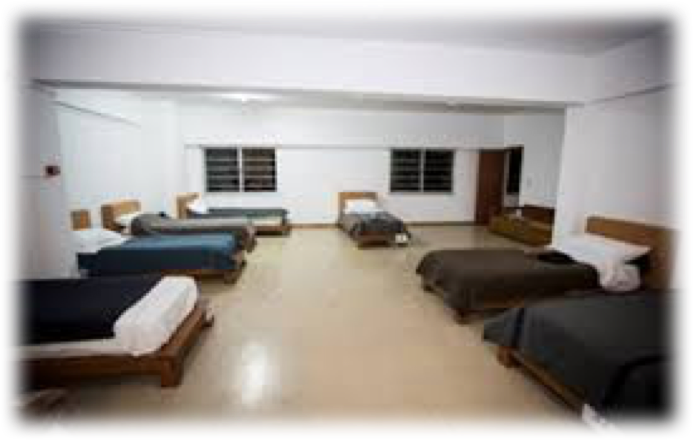Activity A4 is a workshop on the basics of Elementary audio visual Education activities we can use at school, pupils are expected through this activity to have an acquaintance with forms visual expression
(workshop material produced by Members of SMouTh, Greece)
Working on Visual Literacy, one of the main topics in the first year of our Erasmus+ KA2 project, we were very pleased to host in our school a two-days experiential workshop on Visual Literacy organized by Costas Lambroulis and Andreas Albanis, trainers of non-formal education, members of the non-profit organization SMouTh (Synergy of Music Theatre) with the participation of Dr Dimitra Makri.
The theme of the workshop was: “Children investigate their living spaces: The multiple perspectives of observing our home, our school, our city". In this workshop students discussed reality vs photo and the manipulation of our perception of reality, played with the concepts of “home”, “school”, “city” and expressed themselves in creative and artistic ways. Most of all, they experienced “success” and positive feedback in their participation.
Our Erasmus+ project “Multiple paths to Literacy: Differentiated Instruction for Diverse Students” was born with a desire to support schools to maximize the learning and teaching potential in each of our schools, to focus on the needs of individual pupils, to address all students from the lowest to the highest end of academic spectrum all over Europe by pairing 7 European schools.
Visual Literacy Workshop
Methodology
Tirnavos Fourth Primary School
13/12/2017 & 15/12/2017
Title: 'The numerous perspectives of observing the urban environment/biosphere and its aesthetic representation'
Objective:
Students of the Fifth and Sixth Grade will develop several aptitudes and skills via employing the methodology of visual literacy. Furthemore, they will develop their critical thinking and the perception of fundamental notions of diversit, equality and cultural awareness through processing their everyday environment (home, school, neighbourhood, city)
Duration: Six hours
Methodology:
- Icebreaker activity/ meet-'n'-greet (saying a name and an object deriving from the first name's primary letter)
Duration: Ten minutes
Objective: The members of the team and will get to meet and learn each other, giving the grounds for the learners to be familiarised with the teachers. Setting the grounds for a verbal and expressionate warm up, stimulating expression and through the participation of all, working as a successful icebreaker activity.
Description: The group is in a circle and one by one its members say their name and complete a sentence using an object / idea that starts with their original name in relation to what they imagine they did earlier that morning. For example, "It's my name, John, this morning I ate a jar of marmalade.” or "My name is Dimitris and I was out digging before coming here."
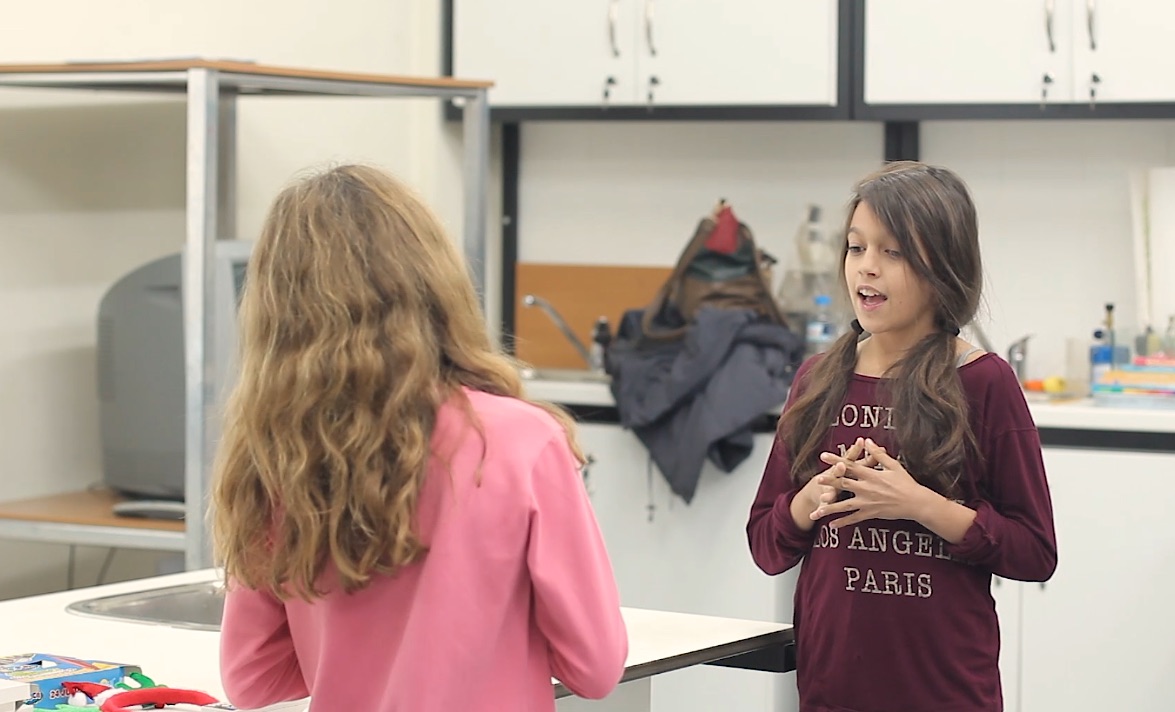
2. Experiential activity: “When I woke up this morning in my home”
Duration: Fifteen minutes.
Objective: Preparing the team members with the idea of home through an internal representation of their own home and the emotions that triggers.
Description: All the team members are to be placed around so one does not obstruct anyone's movements, since they will be called to create their own personal space (each person would ideally need one-two square metres). Then the team members close their eyes, relax in silence (neither to the coordinator, nor the other participant) and imagine that they are in their bedroom, moments before waking up. The coordinator is to guide the team in a slow-paced and tepid manner. Every team member should be feeling inclined to recreate with movements what they are visualising. Keeping their eyes shut, they are asked to visualise where they are waking up (in full detail), the way they open their eyes, what is the first thing they do opening their eyes (stretching, yawning, lolling, get out of bed, put on their slippers, talk to the other members of their family, etc.), which sounds are around their home, with whom they communicate, which is the following room they go once out of bed (bathroom, kitchen, living room, etc.) and what they do there.
Once the above procedure has been completed, the coordinator invites the team members to open their eyes and act out (without speaking) what they are doing until they leave the house for school (ie they wash their teeth and face, dress, prepare their schoolbag, play with their siblings or pets, etc.). The children begin to see what their peers do and modify / enrich their representations.
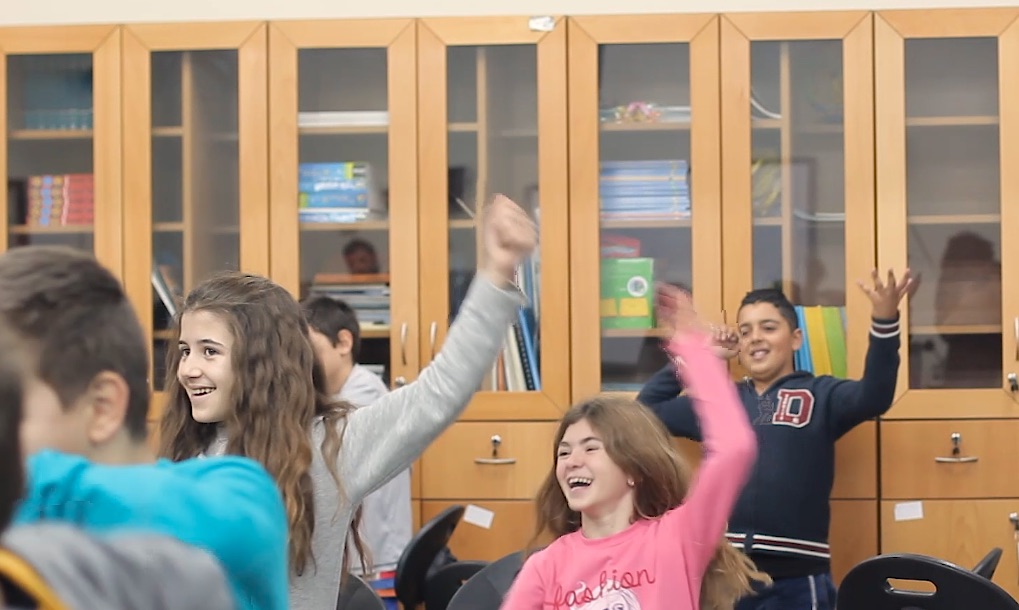
After the coordinator lets the team “play” for about two minutes, they instruct all participants to “freeze” and keep a stance. One by one, the participants should describe what they were doing in that stance.
Once this process has been completed, the coordinator urges the children to shut their eyes once more and restore their sense of home through the feelings they experienced in the first phase of the experiential play (ie safety, protection, warmth, etc.) and compare these feelings with what they feel in other places, such as school.
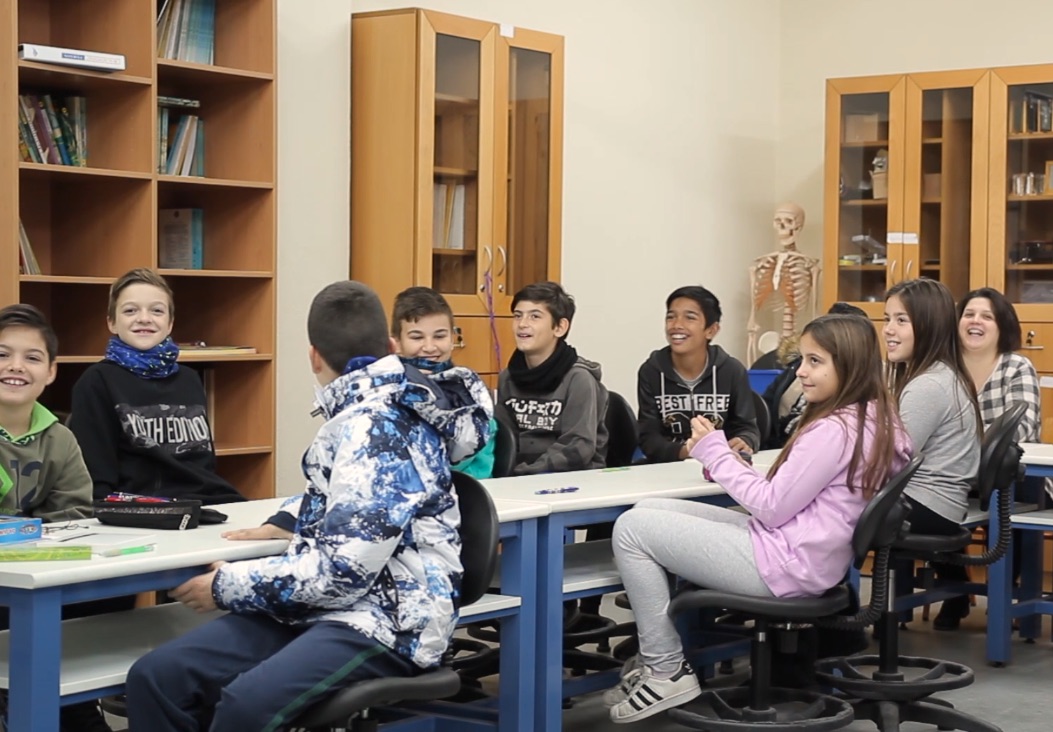
3. Depicting my home
Duration: Ten minutes
Objective: The participants should depict the motions that the notion of “home” triggers on paper, in any way they judge is most representative (for example, painting, sketching, writing, drafting a poem, etc.). This activity takes place prior to the following stages of examining the notions of terms “home/neighbourhood/city with the assistance of images, so the works of the participants will be points of reference and they shall be compared to the creative works that the participants will be asked to produce in the final part of the procedure/methodology, once the group has completed the procedure of education in visual literacy.
Descritption: The coordinator urges children to depict on paper everything that comes to their minds about the concept of "home". They are free to paint (with pencil, pen, markers, crayons) or write a text or combine text and painting. They can paint their home or be inspired by it and capture their feelings about the concept of "home". Once they complete the depiction, the coordinator asks them to add their name to the paper or a badge to make it easy to match the 'before' and the 'after' works
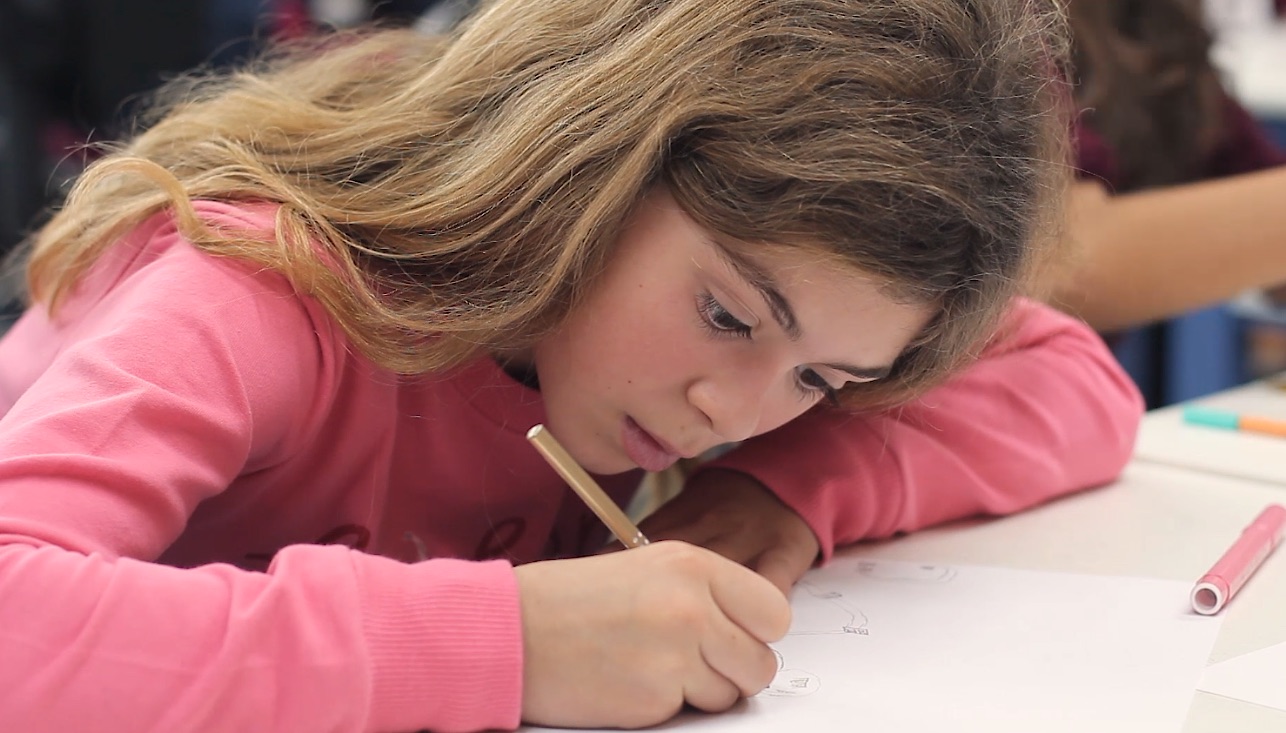
4. Images “home”
Time: Sixty to ninety minutes
Objective: The participants will familiarise themselves in various visual representations of the term “home” and they will enrich their elements of perception of this specific concept. Thusly, they will develop a critical thinking ability, able to make comparisons between diverse cultural/social/historical/financial environments.
Description: Before presenting images, coordinator adresses the participants, asking them, 'What does home mean for us?' This elicits a discussion which feeds on more notions like, 'there are various homes -nests, burrows, treehouses, etc.-','what are we experiencing in emotions (security, coziness, etc.)
Following this, the coordinator projects the first image asking the students to observe it and describe what they are seeing. Students are expected to give answers on the old age of the house (there are many similar houses in Tyrnavos) and they are asked to elaborate on details (eg for wooden shutters, for the old front door). Students also should notice and comment on the tree, the balcony, the small space in front of the front door and the fact that the house has no yard but is located in front of the pavement.
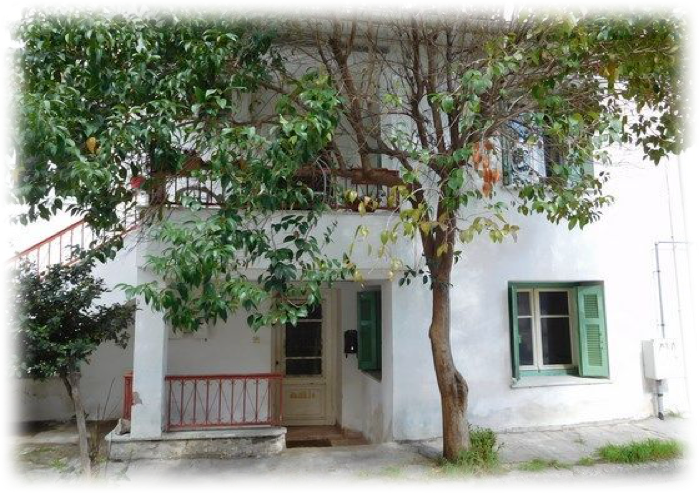
Below is the second photo, which follows. The students here focus on the difference in the age of the house, the contemporary materials (cement, window frames), its larger size, its neoclassical style, the courtyard enclosing the courtyard, the balconies and the ornamental plants. Almost all students agree that this house is home to people who are in good financial condition.
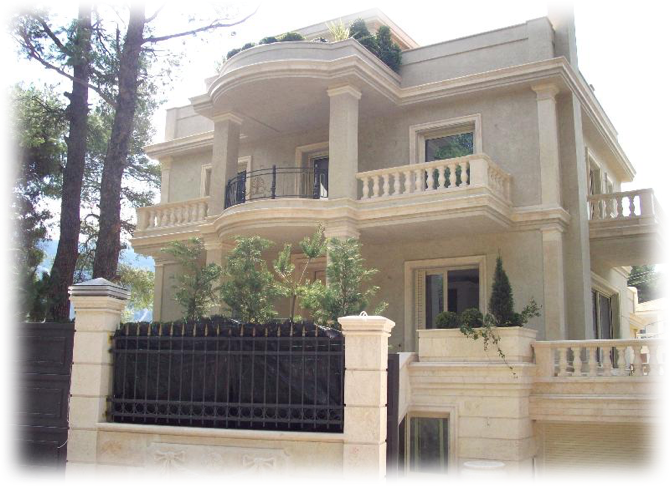
Picture number three Here students are invited to explain which elements of this constuction gives away its 'house' quality(windows, door, roof, etc.). They refer to the materials (a combination of stone and cement) and make assumptions about the interests / aesthetics of its owner.
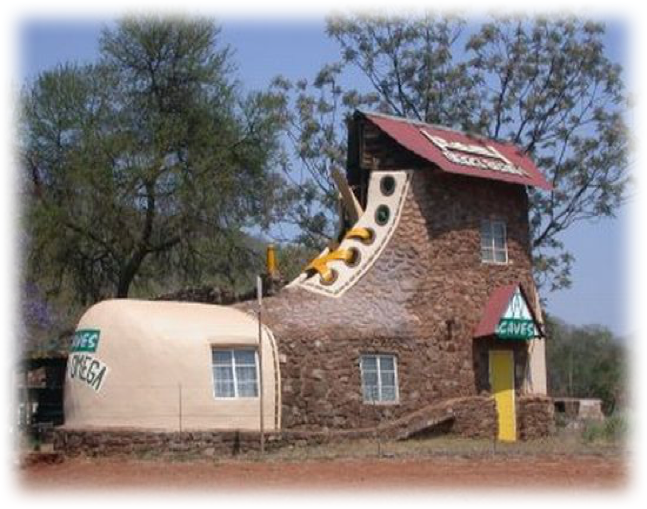
Picture number four Here students are surprised and some find it difficult to explain why they think that this is the image of a home (no windows, doors, distinct roofs, etc.). They understand that it is a construction the size of the house (the part of the roof that appears in the right segment of the photo and the ratio of the size of the pineapple to the trees). The coordinator explains that it is actually a home and that anyone in it can see out through a material similar to the tinted windows of the cars.
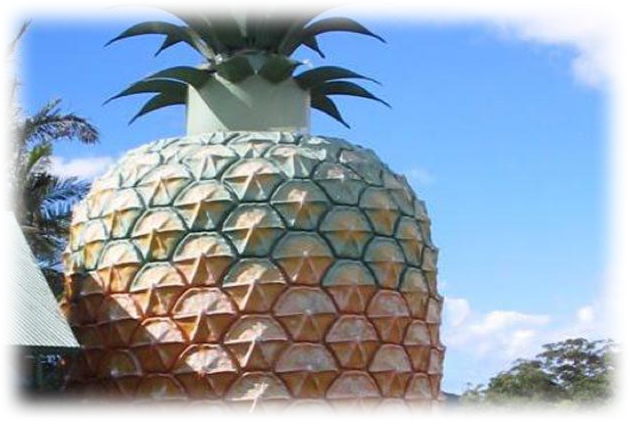
Picture number five The participants observe the turtle, confidently asserting that the turtle carries its home wherever she goes and they are invited to think of other animals with that similar ability (eg snails). The coordinator enriches the debate on issues such as safety, protection, etc.
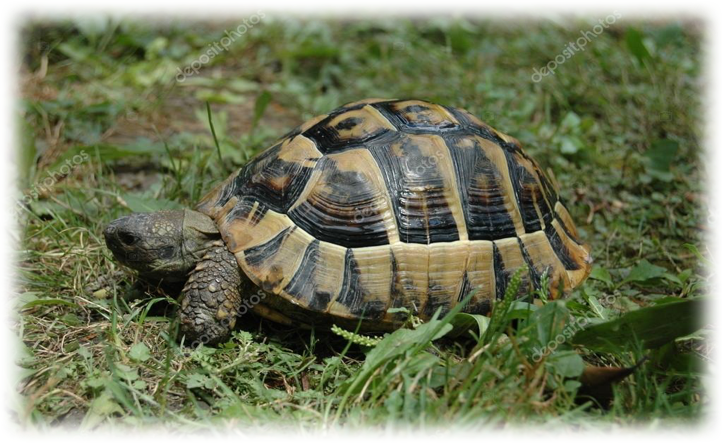
Picture number six Many of the children live or have lived in apartment buildings in the past. They are invited to talk about the differences between apartment building from the previously seen homes (they were related to a person or a family). At this point, it is pointed out by the group that in apartment buildings there are apartments separated by one wall only, that on each floor there are usually 2-3 or more apartments, that people share the common areas (entrance, staircase, elevator, rooftop, common space, floodlight, quad etc.) and that usually activity in one apartment is heard in the other ones also (eg voices, running on the floor etc). Children are encouraged to think and tell why they are building apartment building (less space in cities, more inhabitants per square, etc.).
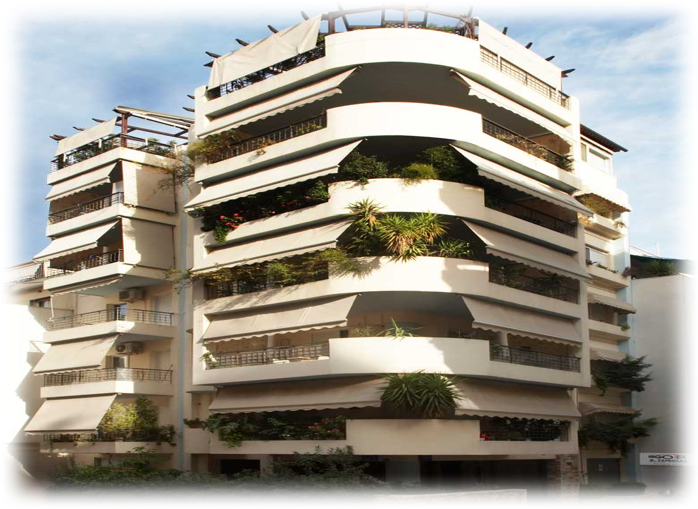
Picture number seven In the picture, featuring beehives, the participants restate in their minds the reasoning that they are not only dealing with the concept of home for people (the photo of the turtle has preceded). It is mentioned here by some participants the concept of community and that a space can be a home for many people.
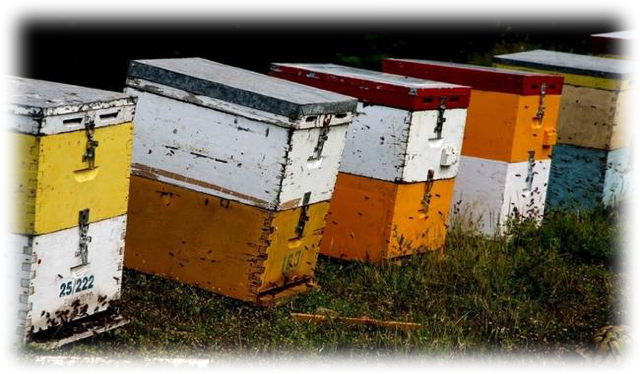
Picture number eight The participants are already contextualised from the Shoe-shaped and Pineapple-shaped houses (Pictures Three and Four respectively), so they will remember what was previously stated and discussed, eliciting and elaborating on the use of this building (e.g. Shopping mall, company headquarters, etc.)
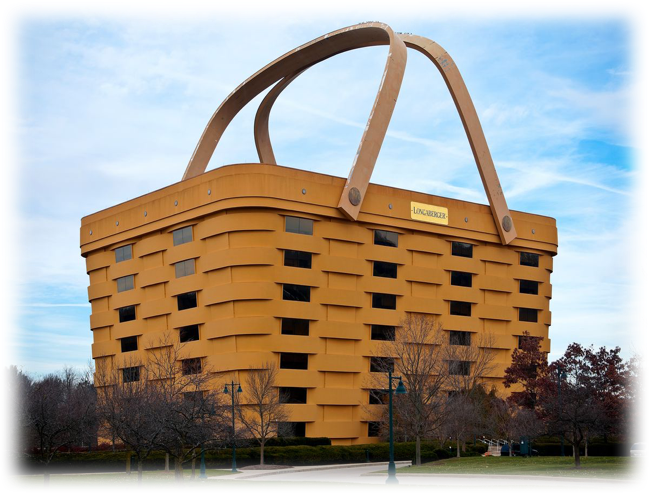
Picture number nine Similarly to photo 7 (bee hive), the students recover several information and share their thoughts about the ant colony they have encountered or watched on some TV shows. At this point, the sense of security that the ants can feel in their colony and the protection it provides from predators, and the fact that they store their food for the winter, can be mentioned again.
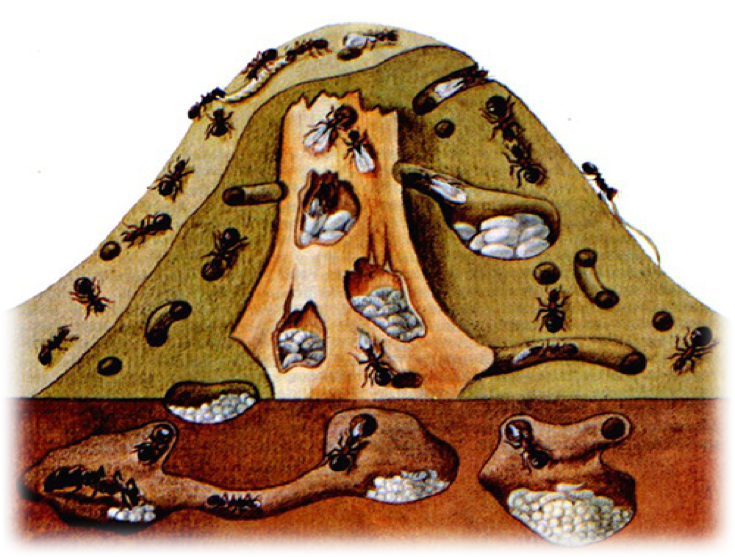
Picture number ten Following the thinking process of pictures 3, 4 and 8, the participants are amused by the strange shapes of these buildings and by now familiar with the process, they interpret or speculate on the use of the building (eg music hall, music store, music-themed museum, house of a music dittelante, etc.).
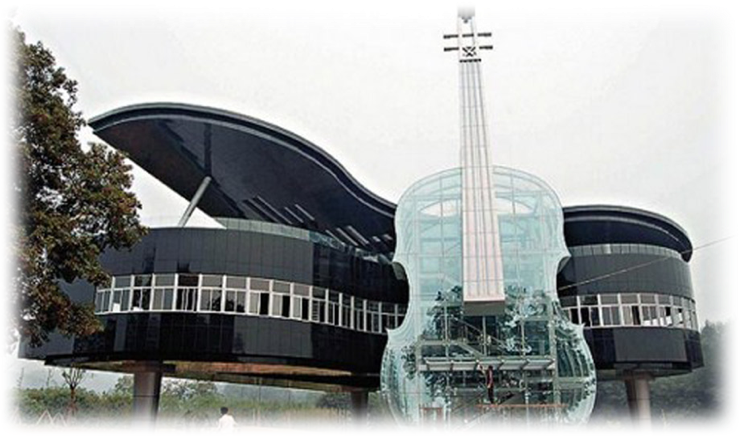
Picture number eleven Here are depicted several floating houses (on the right side of the photo) and boats that can be used as residences. The participants will become accustomed to the different conditions of a canal city, where floating means to be used as homes as the canals themselves are used as roads.
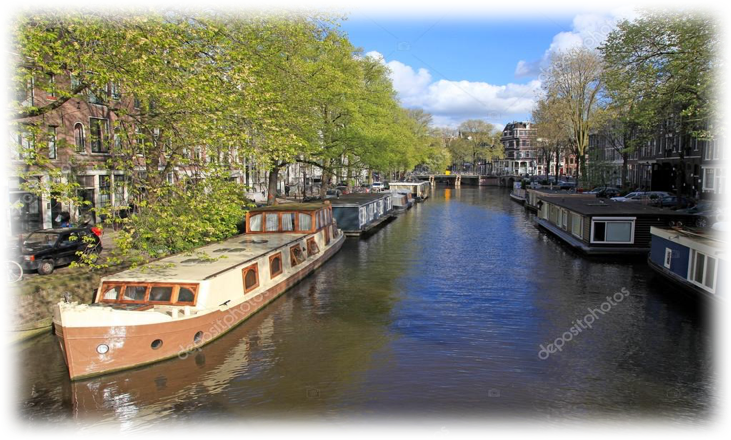
Picture number twelve In this picture, the participants stick to the concept of a floating home surrounded by water, but they are familiar with the logic of construction in relation to the environment and the needs of the people living in these houses. For example, these homes are built on wooden shafts and pillars because of the rising and falling tides, thus, serving the survival needs of their inhabitants as they are mostly fishermen.
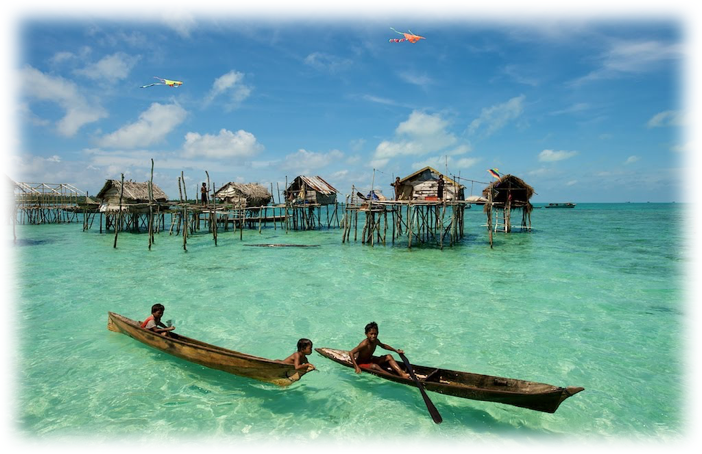
Picture number thirteen Carrying on to what was mentioned on the previous photograph, the participants are more confident in the discussion, as picture number thirteen appears (environmental conditions and peculiarities). Another point of discussion for this image is the materials that people use to build their homes and the fact that in some parts of the world, these materials are simply what can be found around the enviroment in abundancy
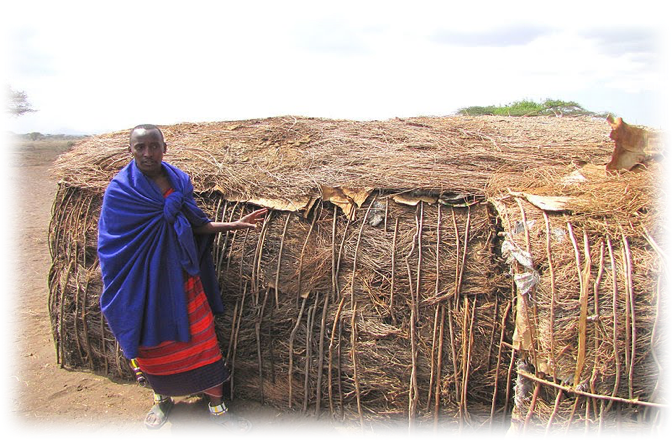
Picture number fourteen This scene is a perfect representation of the way of life of the people in it, who are nomads and must move from place to place. The conversation may regress to the turtle carrying her home with her.
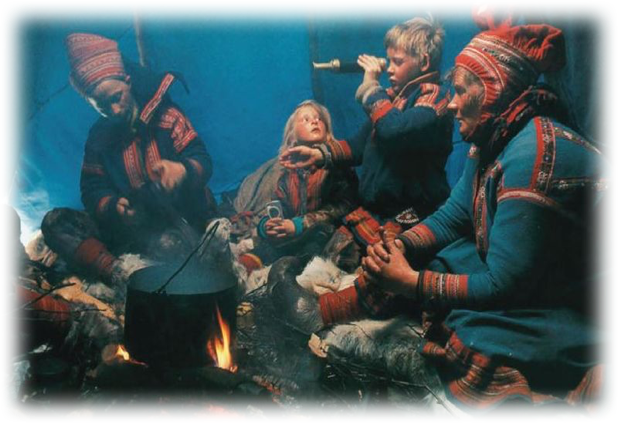
Picture number fifteen In this photo, deeper insights into the elements of environmental conditions, building materials and ways of living people in different parts of the world. A special feature of the igloo is that it maintains a constant temperature around zero at the Celsius scale even when its temperatures are extremely low (-20 to -30 degrees Celsius).
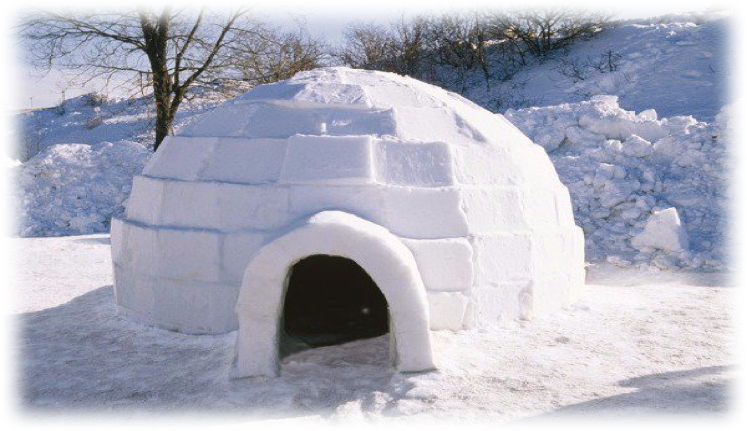
Picture number sixteen In this photo the participants are asked to recognize the priest (Father Antonios from the Ark of the World) who runs locations of hosting children and mothers in need. The children realize that for some children the concept of the home varies from the one they experience and that some shelters, institutes etc. (they also give examples) such as SOS Children´s Villages are home to some other children.
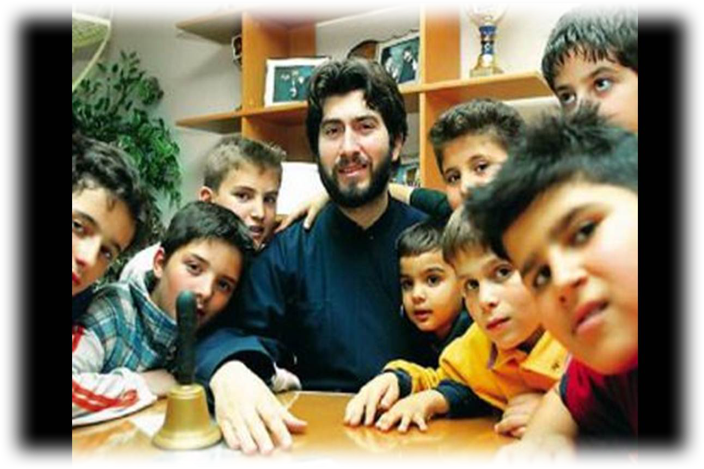
Picture number seventeen The debate on covering the need for housing due to special conditions continues with this image of the refugee camp. The children are free to discuss the associations created by the image and to share information they have heard from the media about the refugees issues.
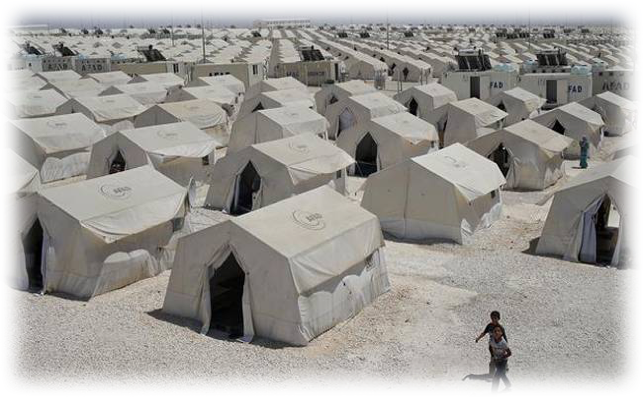
Picture number eighteen Children are invited to elaborate on what they see in this photo. In addition to the obvious (beautiful home in the United States, where people from various cultural backgrounds are living), the coordinator adds that this is the home of a couple in America who hosts other people who have a temporary need for housing. Thus, the discussion falls back on the concept of home for people living in different conditions than those.
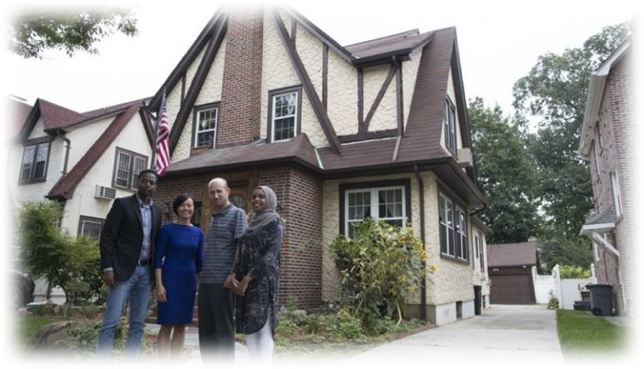
Picture number nineteen Children are invited to elicit what they seeing. Elaborating with guesses and questions, as well as pointing out the details of the image (the absence of personal items, many beds in the same place, etc.), they slowly come to understant that what they see is a housing for homeless people that temporarily covers some people's housing needs. The coordinator proceeds explaining that the picture is from a homeless guest housing project, where one can stay for a few specific days and make a hot bath, wash his clothes and sleep. This also happens to be “home” to some people.
